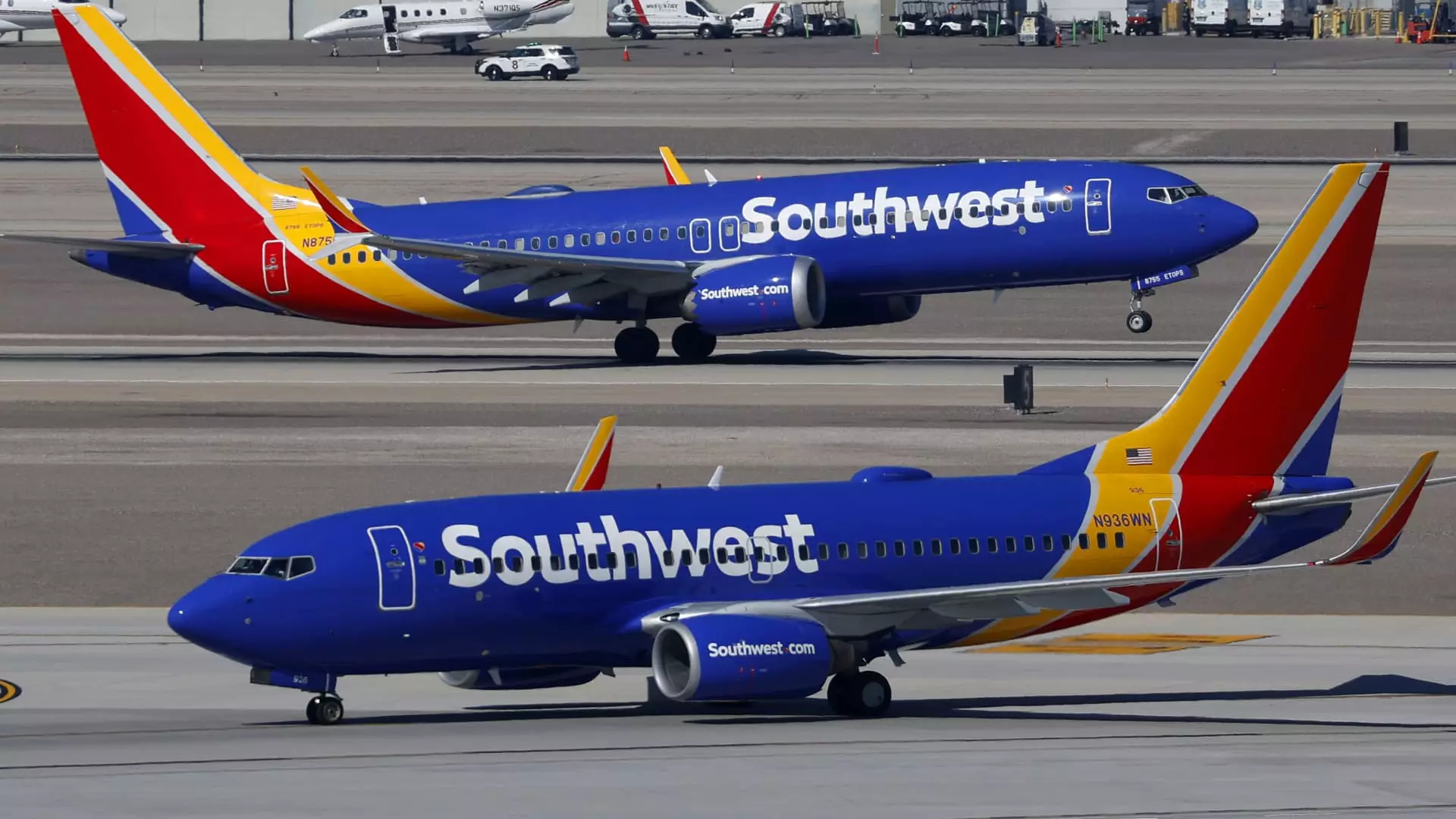Southwest Airlines, long celebrated for its customer-centric policies and egalitarian approach, is embarking on a daring restructuring that fundamentally alters the passenger experience. After decades of open seating, the airline is finally enforcing assigned seats starting January 27, signaling a departure from its rebellious roots. This shift does more than just upgrade their seating system; it reflects a broader strategic move to boost revenue at a time when the airline industry faces fierce competition and shrinking profit margins. While this transition may seem like a necessary evolution, it signifies a calculated compromise on the service principles that once distinguished Southwest from rivals: affordability, simplicity, and customer empowerment.
This decision to abandon open seating is emblematic of Southwest’s recognition that old models are unsustainable in an increasingly commodified market. By consolidating the boarding process into structured groups grounded in loyalty status and fare class, Southwest aims to streamline operations and maximize profitability. But amidst this pragmatic pursuit, it also risks alienating its loyal base—those who appreciated the airline’s egalitarian boarding process that allowed a sense of control and spontaneity. Turning a blind eye to this cultural shift under the guise of efficiency feels like a capitulation rather than an evolution.
The Cost of Transition: Balancing Profitability with Customer Loyalty
In response to mounting competitive pressures, Southwest has introduced a suite of new charges and fare types, including fees for checked bags and seat selections that before were complimentary. These measures are driven by the airline’s desire to secure additional revenue streams—estimated to add hundreds of millions in earnings over the coming years. The logic is straightforward: more ancillary fees mean less reliance on ticket sales alone to stay afloat in an industry where margins are razor-thin.
However, it’s essential to scrutinize the long-term consequences of such policies. Southwests’ historic positioning as a low-cost, no-frills carrier attracted travelers who disliked the complexity and hidden costs typical of legacy airlines. Now, with added fees and assigned seating, it risks losing that reputation, transforming into a more conventional carrier where passengers have less control and transparency. While top-tier flyers and high-paying customers will likely find comfort in priority boarding and seat choices, the average passenger might perceive this as a step back—an erosion of the egalitarian ethos that initially set Southwest apart.
Furthermore, the airline has bet on technological solutions and pre-flight options like early boarding and seat selection to mitigate potential disruptions. Yet, these measures require customers to pay premiums for what was formerly inclusive. It raises questions about whether Southwest can retain its appeal to budget-conscious travelers or if it’s simply trading loyalty for margin enhancements. For the airline’s strategy to succeed, it must delicately balance the demand for increased revenue against the risk of tarnishing its brand integrity.
The Future of Southwest: Efficiency or Erosion of Identity?
The new boarding process—dividing travelers into eight groups based on status and fare class—aims to optimize turnaround times and improve aircraft utilization. The shift from a free-for-all scramble to a managed boarding sequence promises operational efficiencies, but it may come at the expense of spontaneity and personalization. For some travelers, particularly families or those who value seat selection flexibility, this change could dampen the warm, friendly atmosphere Southwest was known for.
The reconfigured aircraft with extra-legroom seats and tiered boarding reflects an attempt to cater to different customer segments. It’s a strategic recalibration—deliberately convenience-oriented for those willing to pay more, while maintaining the core of low-cost travel for others. Yet, whether this hybrid approach will sustain Southwest’s competitive edge remains uncertain. The airline must grapple with the possibility that it might be diluting its brand identity—once a rebellious underdog—into a more traditional, profit-driven enterprise.
In taking these steps, Southwest seems to be positioning itself in the middle ground: unwilling to fully commodify itself like legacy carriers, but no longer the pioneer of open seating and unbundled fares it once was. This balancing act will define its relevance in the increasingly complex airline industry. If the airline fails to maintain its core value—fairness, simplicity, and customer loyalty—it risks being perceived as just another player trying to chase profits at the cost of the very identity that made it unique.

